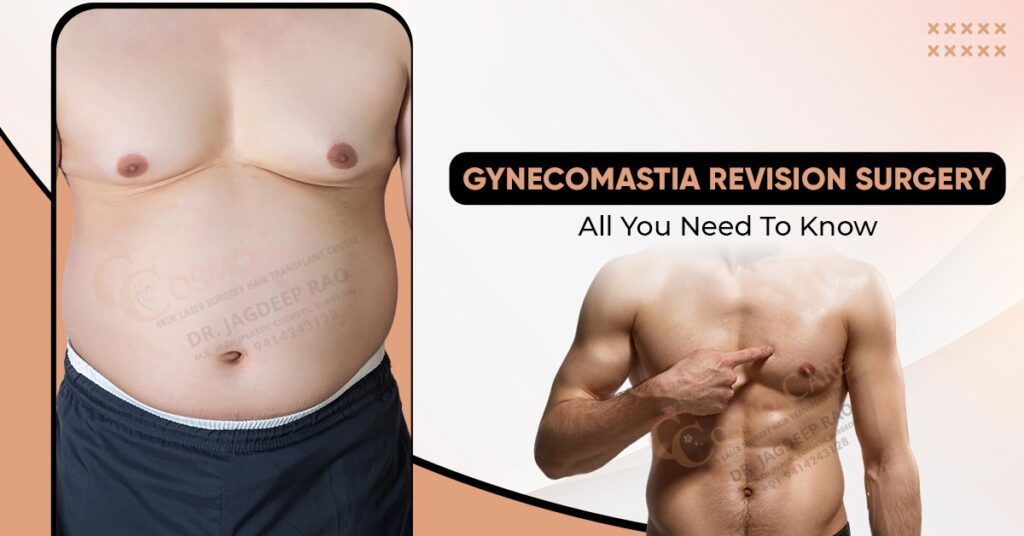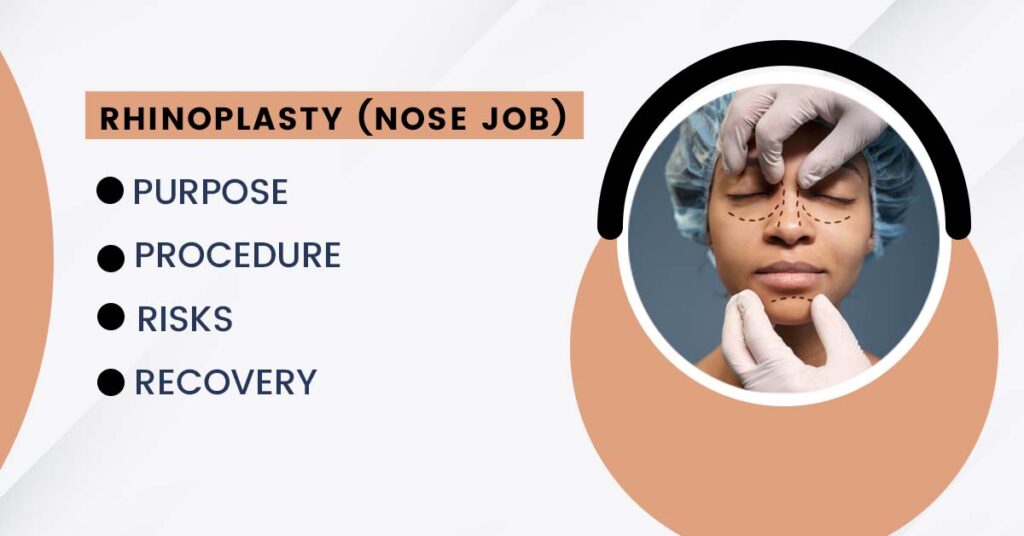Gynecomastia revision surgery, also known as secondary gynecomastia surgery, is a surgical procedure aimed at correcting unsatisfactory results or complications from a previous gynecomastia surgery.
Gynecomastia, characterized by the enlargement of male breast tissue, can cause physical discomfort and psychological distress. While primary gynecomastia surgery effectively addresses this condition in many cases, there are instances where revision surgery may be necessary to achieve the desired outcome.
This comprehensive guide provides valuable insights into gynecomastia revision surgery, including reasons for revision, surgical techniques, the recovery process, and potential risks and complications.
Reasons for Gynecomastia Revision Surgery:
- Incomplete Correction: In some cases, primary gynecomastia surgery may fail to fully address the excess breast tissue, resulting in asymmetry, contour irregularities, or residual glandular tissue. Revision surgery aims to correct these issues and achieve a more aesthetically pleasing outcome.
- Complications: Complications such as hematoma (collection of blood), seroma (fluid accumulation), infection, or wound healing issues can occur following primary gynecomastia surgery. Revision surgery may be necessary to address these complications and optimize the surgical outcome.
- Scar Revision: Scarring is inevitable in any surgical procedure, including gynecomastia surgery. However, some patients may develop hypertrophic scars or keloids, which can be unsightly and cause discomfort. Revision surgery may involve scar revision techniques to improve the appearance of scars and promote better healing.
- Unsatisfactory Aesthetic Result: Despite achieving the desired reduction in breast size, some patients may be dissatisfied with the overall aesthetic result of their primary gynecomastia surgery. Revision surgery offers an opportunity to refine the chest contour, improve symmetry, and enhance the overall appearance of the chest.
- Changes in Breast Appearance: Changes in weight, hormonal fluctuations, or ageing may alter the appearance of the chest over time, leading to recurrent gynecomastia or changes in breast shape and size. Revision surgery may be performed to address these changes and maintain a satisfactory chest contour.
You Can read also:- What does the hair transplant recovery timeline look like?
Surgical Techniques for Gynecomastia Revision:
- Liposuction Revision: Liposuction is commonly used in both primary and revision gynecomastia surgery to remove excess fat deposits from the chest area. Liposuction revision may involve further contouring and refining of the chest contour to address residual fat deposits or asymmetry.
- Excision Revision: In cases where excess glandular tissue remains or there are contour irregularities following primary surgery, excision revision techniques may be employed. This may involve additional removal of glandular tissue or reshaping of the chest through excisional techniques.
- Scar Revision: Scar revision techniques such as surgical scar excision, laser therapy, or steroid injections may be utilised to improve the appearance of scars resulting from primary gynecomastia surgery. Scar revision aims to minimize scar visibility and promote better aesthetic outcomes.
- Combination Techniques: Depending on the individual’s unique anatomy and aesthetic goals, a combination of liposuction, excision, and scar revision techniques may be employed during gynecomastia revision surgery. This tailored approach ensures optimal results and patient satisfaction.
Recovery Process:
The recovery process following gynecomastia revision surgery is similar to that of primary gynecomastia surgery, albeit with some variations depending on the extent of the revision and individual healing factors. The following are some broad principles for the healing process:
- Postoperative Care: Patients are advised to follow postoperative instructions provided by their surgeon, which may include wearing compression garments, avoiding strenuous activities, and taking prescribed medications to manage pain and prevent infection.
- Compression Garments: Compression garments are typically worn postoperatively to reduce swelling, support the chest tissues, and promote optimal healing. Patients are usually instructed to wear compression garments for several weeks following surgery, as advised by their surgeon.
- Activity Restrictions: Patients are advised to avoid strenuous activities, heavy lifting, and vigorous exercise during the initial stages of recovery to prevent complications and optimize healing. Light activities and gentle movements may be gradually resumed as tolerated, following the surgeon’s guidance.
- Follow-Up Appointments: Regular follow-up appointments with the surgeon are essential to monitor the healing process, assess surgical outcomes, and address any concerns or complications that may arise. Patients should attend all scheduled follow-up appointments and adhere to their surgeon’s recommendations for postoperative care.
- Scar Management: Scar management techniques may be initiated during the recovery process to promote optimal scar healing and minimize scar visibility. These may include the use of silicone gel or sheets, topical creams, and scar massage techniques, as advised by the surgeon.
- Resumption of Normal Activities: The timeline for resuming normal activities, including work, exercise, and social activities, varies depending on individual healing and the extent of the revision surgery. Patients should consult with their surgeon for personalized guidance on when it is safe to resume specific activities.
Potential Risks and Complications:
While gynecomastia revision surgery is generally safe and effective, like any surgical procedure, it carries inherent risks and potential complications. These may include:
- Bleeding and Hematoma: Excessive bleeding or hematoma formation following surgery may require surgical intervention to address and prevent complications.
- Infection: Infection at the surgical site is a potential complication that may require antibiotic treatment or additional interventions to resolve.
- Seroma: Seroma, or fluid accumulation under the skin, may occur following surgery and may require drainage or aspiration to alleviate discomfort and promote healing.
- Poor Wound Healing: Poor wound healing or wound dehiscence (wound opening) may occur, particularly in patients with underlying medical conditions or those who do not adhere to postoperative care instructions.
- Asymmetry: Persistent asymmetry or contour irregularities may occur following revision surgery, necessitating additional corrective procedures to achieve optimal symmetry and aesthetic outcomes.
- Numbness or Sensory Changes: Temporary numbness or sensory changes in the chest area may occur following surgery but typically resolve over time as nerves regenerate.
Conclusion:
Gynecomastia revision surgery serves as a vital solution for individuals seeking to address unsatisfactory outcomes or complications following primary gynecomastia procedures.
As a board-certified plastic surgeon specializing in gynecomastia surgery, Dr. Jagdeep Rao understands the importance of comprehensive evaluation, precise surgical techniques, and personalized care to achieve optimal patient results.
Known for his dedication to excellence and patient satisfaction, Dr. Rao provides the best gynecomastia surgery in Jaipur, combining advanced surgical expertise with a compassionate approach.
Through meticulous attention to detail and dedication to delivering natural-looking outcomes, Dr. Jagdeep Rao continues to be a trusted provider of gynecomastia surgery in Jaipur, empowering patients to restore confidence and enhance their quality of life.







